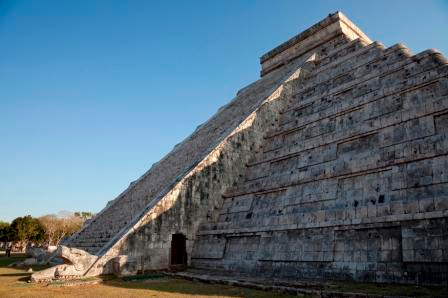China is the largest country in the world, and has experienced unprecedented economic and social growth in the last thirty years.
In 2008, the country hosted the Summer Olympic Games in the capital Beijing, putting the city in the global spotlight and showing the world what an incredible place it is to visit.
Forbidden City
One of the most iconic locations in China, the Forbidden City is a palace complex that was used by emperors for almost 500 years, until 1912.
It has nearly 1,000 buildings on 180 acres, and took over one million laborers 14 years to build.
Now part of the Palace Museum, it provides a rich display of the history of the Ming and Qing dynasties, as well as the Chinese people and their lives.
It is at the top of every tourist list because of its amazing gates, turrets and imperial gardens.
Temple of Heaven
China has a long history of Taoist religious devotion, going back at least 2,500 years. The Temple of Heaven is a large complex of temples dedicated to the worship of the sun, moon and earth.
It was started in 1400, but never entirely completed. It is now open to visitors, who can take in the beauty of the green spaces and parks, as well as the intricate details of the many temples and buildings at the site.
Tiananmen Square
It is often used for military parades and shows of force. It was famously the site of student-led protests for democracy, freedom of speech and other issues in 1989.
A picture of a lone student standing in front of rows of tanks has become an iconic image of the event, highlighting the mostly peaceful protest and overbearing military response.
Today, visitors can walk around the large plaza and enjoy the views while learning about the many important historical events that have taken place in this square.
Mausoleum of Mao Zedong
Mao Zedong was a communist revolutionary and the founder of the current government, the People’s Republic of China.
When he died on September 9, 1976, the entire country mourned his death. His body was laid in state for a week to allow for over one million Chinese to pay their last respects, before he was interred in the mausoleum near the Forbidden City and Tiananmen Square.
His body was embalmed and placed in a clear, crystal coffin so that visitors would always be able to see and pay respects to their leader.
Old Summer Palace
While the Forbidden City provided an official home for the emperor and his government, the Old Summer Palace about five miles away was the primary residence of the leader and his family. It was built in the 1700s and was renowned for its beautiful architecture and designed gardens. It was looted and severely damaged in the 1860s during an international conflict and never fully restored.
After years of neglect and even use as farmland, it was turned into a national historical site, a beautiful respite in the center of one of the busiest cites in the world.
Palace of Peace and Harmony Lama Temple
The Lama Temple is a classic Buddhist temple and monastery in Beijing that was built in the 1700s, and boasts beautiful architecture and symbolism of peace and harmony throughout the structures.
It was closed during Mao’s reign, but was spared destruction due to high-level intervention. It was reopened in 1981, to both religious use and public visits. Among the most popular destinations within the temple is the 85 foot Buddha carved from a single piece of sandalwood, which was actually included in a Guinness Book of World Records.
Olympic Park
In 2008, Beijing hosted the Summer Olympics, the first ever in the country. The government worked to give the world a great first impression, and constructed several structures for the Olympics to ensure that was the case.
Part of the construction included the Olympic Park stadium, nicknamed the Bird’s Nest. It was famous for the artistic design and large crowd capacity. It will again be used in 2022, when China hosts the Winter Olympics.
Beijing is an ancient city, but many people are just learning about the many wonders it has to offer, both old and new. If you have the opportunity, you should certainly take a chance and visit one of the biggest, most dynamic and intriguing cities in the world.









































































